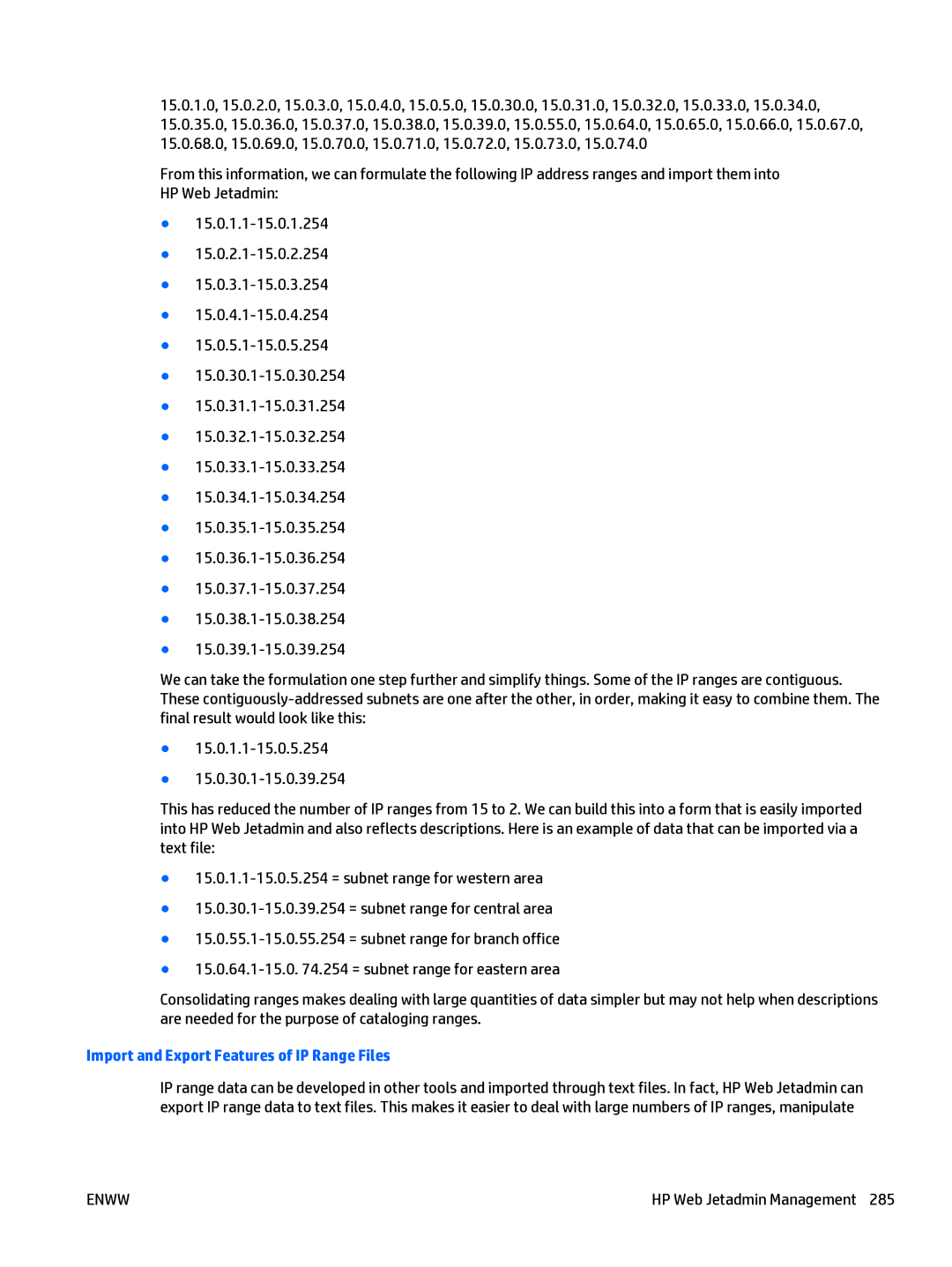15.0.1.0, 15.0.2.0, 15.0.3.0, 15.0.4.0, 15.0.5.0, 15.0.30.0, 15.0.31.0, 15.0.32.0, 15.0.33.0, 15.0.34.0, 15.0.35.0, 15.0.36.0, 15.0.37.0, 15.0.38.0, 15.0.39.0, 15.0.55.0, 15.0.64.0, 15.0.65.0, 15.0.66.0, 15.0.67.0, 15.0.68.0, 15.0.69.0, 15.0.70.0, 15.0.71.0, 15.0.72.0, 15.0.73.0, 15.0.74.0
From this information, we can formulate the following IP address ranges and import them into HP Web Jetadmin:
●
●
●
●
●
●
●
●
●
●
●
●
●
●
●
We can take the formulation one step further and simplify things. Some of the IP ranges are contiguous. These
●
●
This has reduced the number of IP ranges from 15 to 2. We can build this into a form that is easily imported into HP Web Jetadmin and also reflects descriptions. Here is an example of data that can be imported via a text file:
●
●
●
●
Consolidating ranges makes dealing with large quantities of data simpler but may not help when descriptions are needed for the purpose of cataloging ranges.
Import and Export Features of IP Range Files
IP range data can be developed in other tools and imported through text files. In fact, HP Web Jetadmin can export IP range data to text files. This makes it easier to deal with large numbers of IP ranges, manipulate
ENWW | HP Web Jetadmin Management 285 |
